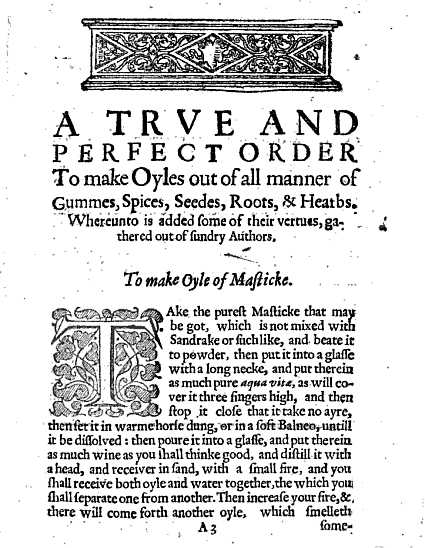Bibliotheca Excrementa
The February 2008 issue of Harper’s Magazine has an interesting article describing the life cycle of sewage called Wasteland: A journey through the American cloaca by Frederick Kaufman. Actually, the most fascinating aspect of the whole piece was a short digression on the history of waste and its uses throughout history. Along with a compendium of obscure terms for excrement:
egesta, dejecta, sharn, stale, skite, dynga, ordure, oriental sulfur, occidental sulfur, carbon humanum
the author mentions a number of “classic” texts on the subject:
The Secrets of Physicke,
London, 16331,2
Drek-Apothek,
Christian Franz Paullini, Frankfurt, 1696 (German)
Chylologia Historico-Medica,
Martin Schurig, Dresden, 1725 (Latin)
Scatalogic Rites of All
Nations, John Bourke, Washington D.C., 1891
All of the books are available at Google Books in one form or another.

From A Storehouse of Physicall and Philosophicall Secrets
1 This book contains instructions for the preparation of “oyles” for the treatment of various conditions such as epilepsy, cankers and hangovers that involve feces and ground-up skull:
To di∫till oyle of a mans ExcrementsTake the doung of a yong ſanguine childe or man, as much as you will, and diſtill it twiſe in a Limbecke of glaſſe. This helpeth the Canker and mollifieth Fiſtulaes: comforteth thoſe that are troubled with Allopecia.
The make Oyle of the skull of a man.Take the skull of a man that was never buried, and beate it into powder, then diſtill it againe, and this you ſhall doe three times upone the feces, and at the laſt give it ſtrong fire, untill the oyle be come forth: the which ye ſhall ſeparate by Balneo, and keepe it cloſe ſhut in a glaſſe. The doſe is three graines, againſt the falling ſickneſſe. Ye ſhall underſtand, that there is alſo a ſalt to be drawn forth of the feces, the which is of great vertue againſt the aforeſaid diſeaſes being drunke with wine, as is aforeſaid.
2 The edition available at Google Books is actually called “A Storehouse of Physicall and Philosophicall Secrets” and is attributed to the great 16th century alchemist Paracelsus. The only place I saw it listed with the name given above was in a footnote in the Bourke book, where I suspect Kaufman gathered most of his historical digression. It took some digging to find the actual text. Interestingly, Paracelsus is nowhere mentioned in the Storehouse text. A bit more searching revealed that this book had originally been published in 1575. The details behind this attribution are given in Bibliographical Notes on Histories of Inventions and Books of Secrets, Fifth Supplement, p130-132.



That Harper’s article really was good %80 of the way but ended up pretty unsatisfying. Still, it is pretty interesting, what we choose not to contemplate. I really enjoyed this book:
http://www.jenkinspublishing.com/humanure.html
The guy certainly has an opinion! His self-interview at the end helps put his admittedly extreme stance in good perspective.
» Posted by David S. on February 18, 2008 11:19 AM